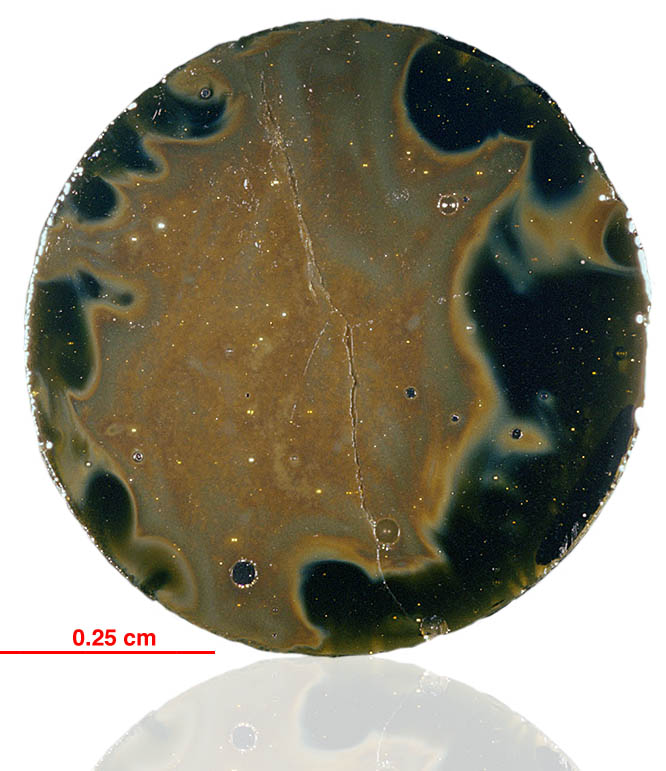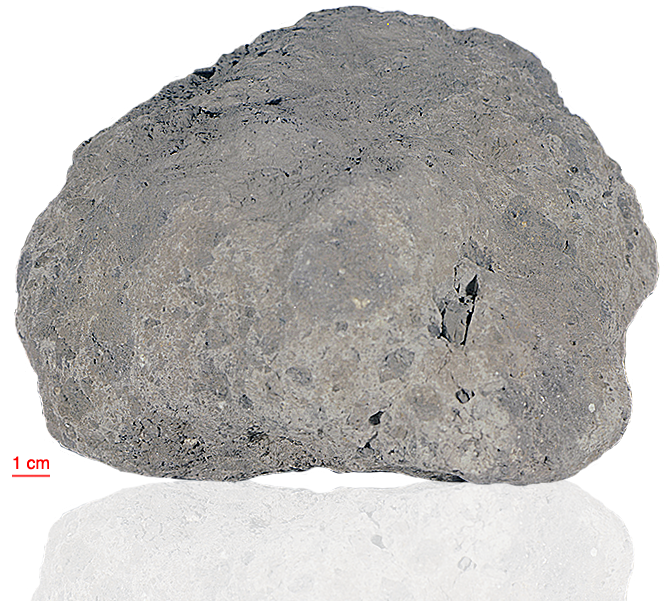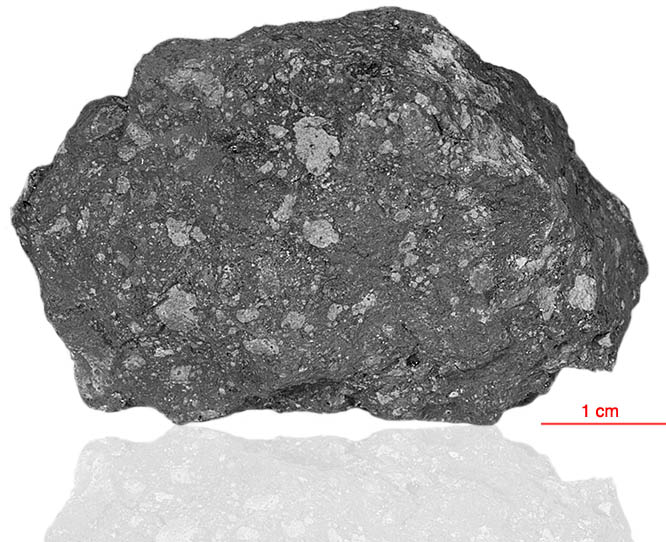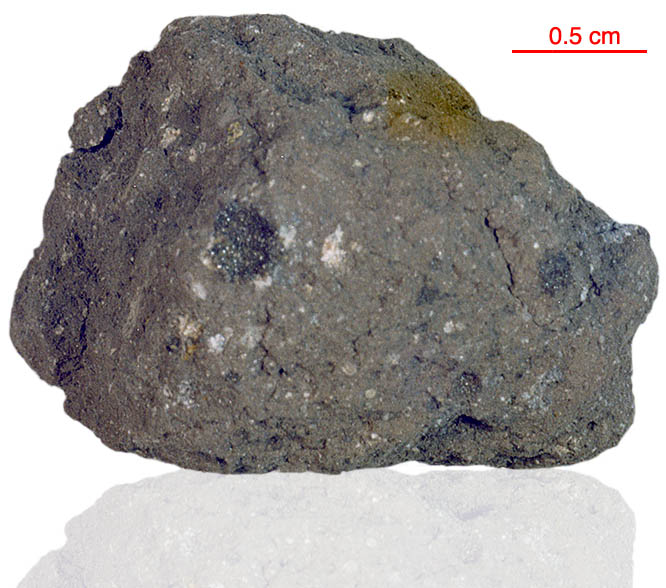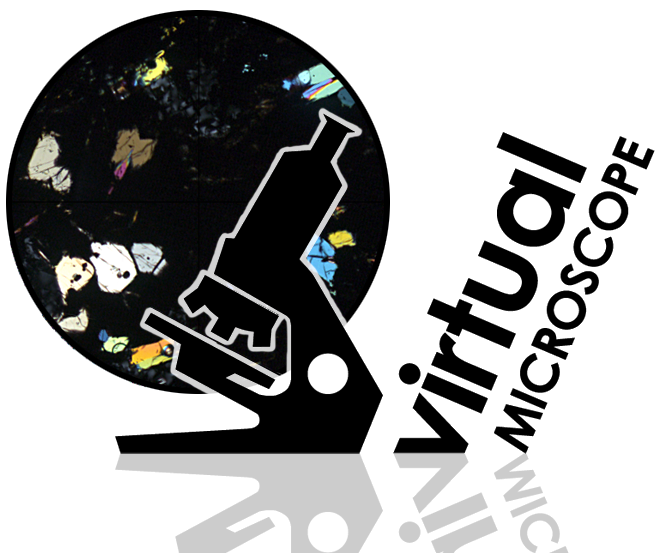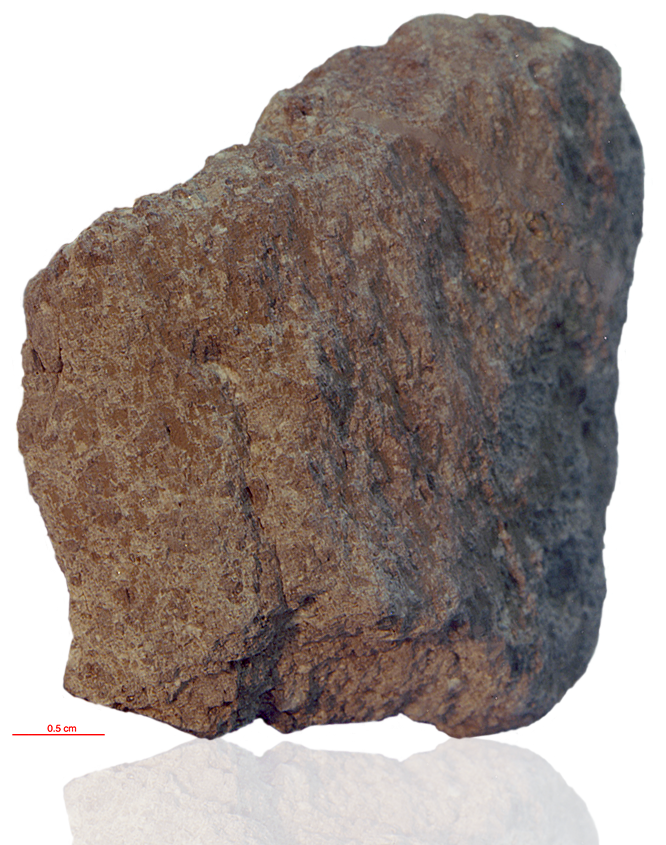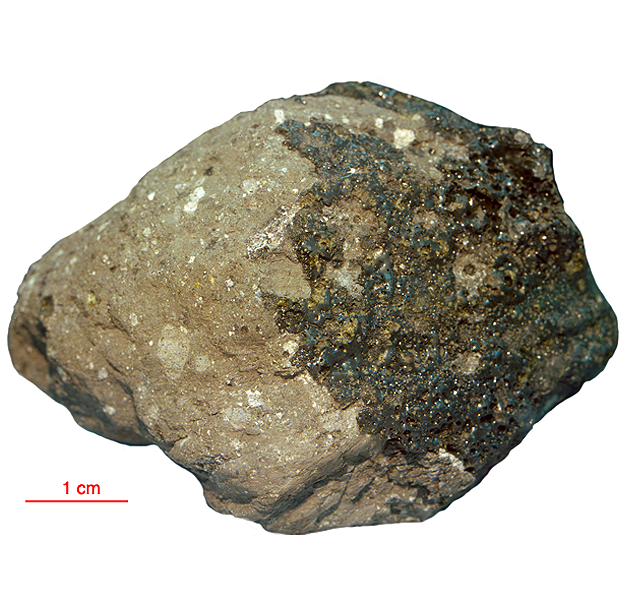
Fact sheet
14055 is a friable blocky, sub-angular to sub-rounded rock lightly covered with glass-lined zap pits. It is a fine-grained clastic rock with 5 to 15% of sub-rounded light-coloured clasts in a medium-grey matrix. Lithic fragments include both granulite and basaltic compositions. A high percentage of agglutinates is also reported.
The sample weighed 111 grams before analysis. It has not been dated.
Rotation 1 shows a spherical glass globule, whereas rotation 2 shows a relatively large (and unusual) ropy glass fragment.
Further details of this and other Apollo samples are here: http://curator.jsc.nasa.gov/lunar/
The Apollo 14 landing site was in a region formed by impact-basin debris.
Most of the 42 kilograms of rocks and soil collected on Apollo 14 are breccias (rocks that are composed of fragments of other, older rocks). In some cases, the rock fragments that form a breccia are themselves breccias. Such rocks obviously have experienced complex histories with multiple generations of impact events. Some breccias were heated enough that some of the material in the rock was melted.
Apollo 14 was launched on 31 January 1971.

